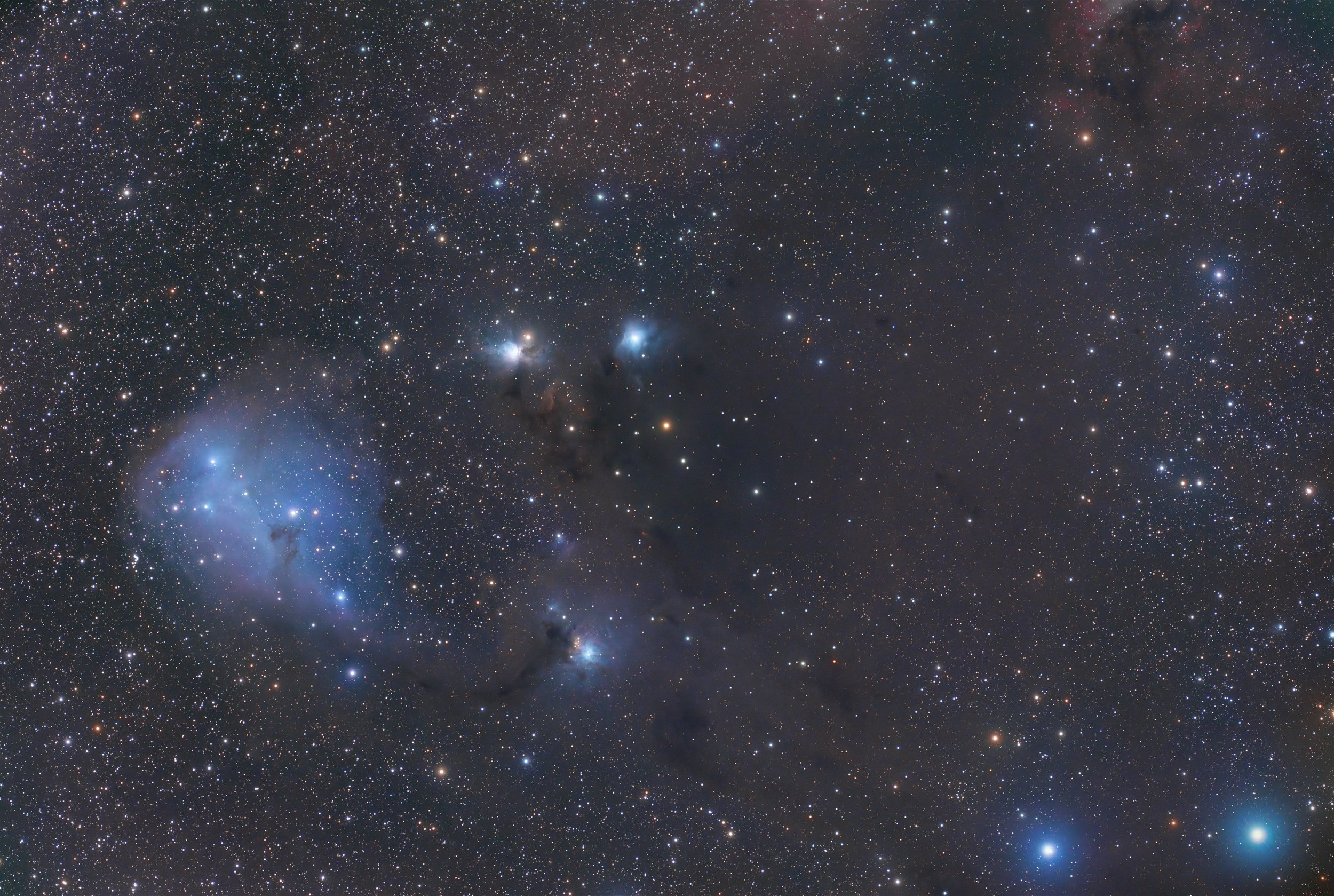
AAPOD2 Image Archives
Ghostly Light in Centaurus
Drifting through the southern skies in the constellation Centaurus, NGC 5367 is a hauntingly beautiful reflection nebula embedded in a dark molecular cloud complex. The wispy blue glow near the center is caused by starlight scattering off interstellar dust, primarily from a young binary star system still forming within the nebula’s opaque folds. This LRGB image reveals the full extent of the surrounding dust structures, illuminated not only by the central stars but also by the ambient starlight of the Milky Way, producing an ethereal interplay between light and shadow.
Captured with exquisite depth and detail, this image showcases the delicate filaments and ghostlike clouds that typify this under-observed region. NGC 5367 lies roughly 2,000 light-years away and is part of the larger cometary globule CG 12. Though visually faint, these kinds of nebulae are astrophysical laboratories—harboring nascent stars, turbulent gas dynamics, and cosmic dust grains that eventually seed planetary systems. The composition’s expansive framing and faint surrounding structures make it not just a target of scientific interest, but a portrait of interstellar stillness.



